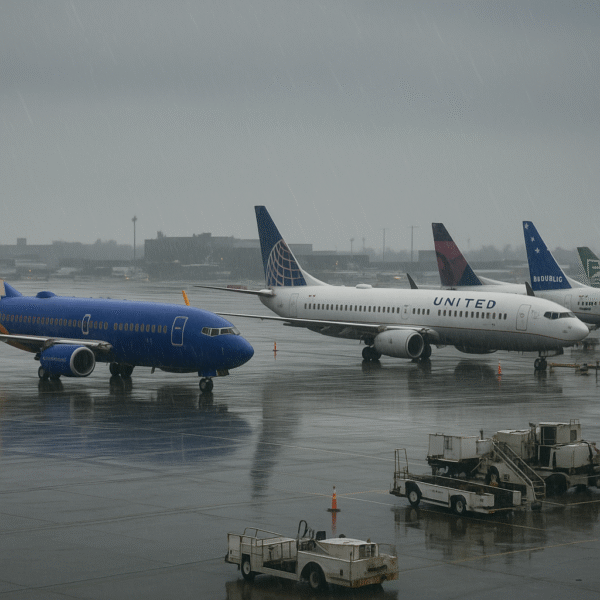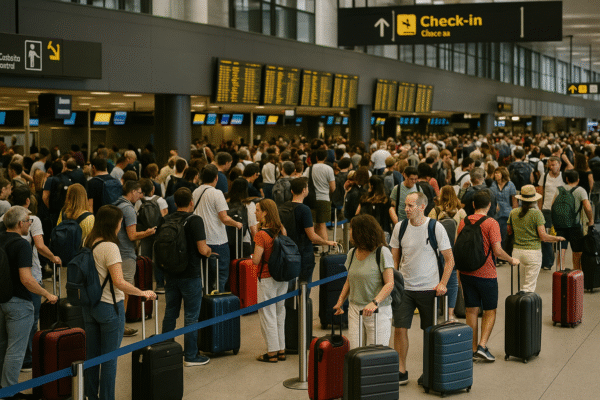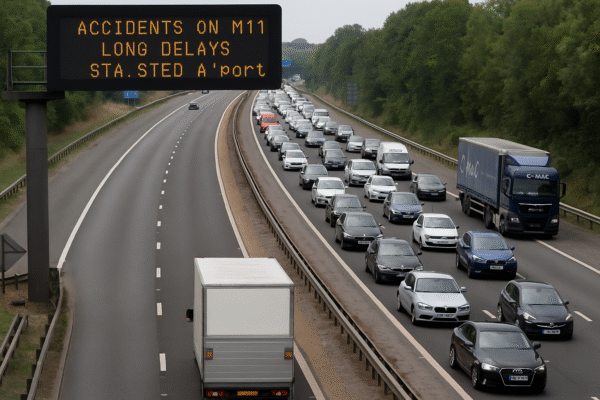Commuters, travelers, and airport-bound passengers faced hours of gridlock on the M11 motorway on the morning of July 4th, as two serious crashes near Junctions 8 and 9—close to London Stansted Airport—brought traffic to a near standstill. Emergency services were swiftly dispatched to manage the scenes, but the disruption stretched throughout the morning, with queues lasting for miles in both directions. The incident reignited growing concerns over road safety and infrastructure readiness on one of Southeast England’s most vital travel corridors.
Emergency Services Respond to Multi-Vehicle Crashes
The two accidents, which occurred just miles apart in the northbound and southbound lanes, involved multiple vehicles and forced the temporary closure of all lanes on the M11. Essex Police, East of England Ambulance Service, and fire crews were deployed alongside National Highways traffic officers to assist those involved and to begin the cleanup and road safety operations.
National Highways issued immediate travel alerts warning drivers of “very long delays” that could persist even after the lanes reopened. As emergency responders worked quickly to treat minor injuries and remove debris, traffic continued to back up, severely affecting access to and from Stansted Airport—a key international gateway for London and the East of England.
Severe Traffic Congestion Near Stansted Airport
Following the crashes, congestion stretched up to five miles on the southbound side of the M11 and as far as seven miles northbound. Stansted Airport, located just off Junction 8, saw major disruptions for travelers heading to catch early-morning and mid-morning flights. Transport for London (TfL) and airport authorities urged passengers to allow for additional travel time and explore public transport options where available.
Flight departures at London Stansted, which handled over 28 million passengers in 2023 according to the UK Civil Aviation Authority, remained largely on schedule, but many passengers reported anxiety over potentially missing flights due to the unpredictable delays on the motorway.
Ripple Effect on Southeast England’s Transport Network
The M11 motorway, which connects northeast London to Cambridge and beyond, is a lifeline for both local commuters and international travelers. The July 4th incident caused traffic diversions through Bishop’s Stortford and surrounding rural areas, which in turn became congested due to overflow traffic.
Even after emergency services cleared the accident scenes, residual delays remained for several hours. Local bus services and taxi operations were impacted, while logistics companies reported late arrivals and missed delivery slots.
National Highways confirmed that while both carriageways reopened by late morning, the full restoration of normal traffic flow took much longer due to road surface repairs and safety inspections. This level of disruption has sparked renewed discussion about the need for more resilient motorway infrastructure.
Road Safety Concerns on the Rise
The crashes have drawn attention to the M11’s safety record and its capacity to handle heavy volumes of traffic—particularly around Junction 8, where traffic density spikes due to proximity to Stansted Airport. According to Department for Transport (DfT) statistics, serious collisions along the M11 corridor have risen slightly over the past five years, despite broader national efforts to improve road safety.
Local councillors and Essex transport advocacy groups have called for enhanced traffic calming measures, including better signage, improved lighting at junctions, and upgraded lane control technology. The idea of implementing smart motorway features on high-risk sections of the M11 has also been reintroduced into public policy debate, although funding remains a hurdle.
Impact on Daily Commuters and Business Travelers
For daily commuters who rely on the M11 to reach London and nearby business parks, the delays were particularly frustrating. Employees reported arriving late to work or missing meetings, while business travelers attempting to catch early flights from Stansted voiced frustration over the lack of real-time diversion updates.
This incident underscores how vulnerable the region’s road infrastructure can be to sudden disruptions. With no rail line directly connecting all parts of Essex and Hertfordshire to Stansted, the reliance on private cars and airport shuttle coaches remains extremely high.
Calls for Infrastructure Investment and Contingency Planning
In light of the July 4th events, stakeholders are urging the UK government and National Highways to prioritize funding for infrastructure improvements. This includes potential expansion of the M11 to incorporate hard shoulder running, more intelligent traffic systems, and better integration with Stansted’s airport operations.
Stansted Airport itself has long been pushing for improved road and rail connectivity as part of its long-term growth strategy. In its official master plan, the airport outlines ambitions to support up to 43 million passengers annually in the coming decades—a goal that will be difficult to achieve without a robust surrounding transport network.
Preparing for the Future: Safety and Resilience
As air travel demand continues to grow and regional population centers expand, ensuring motorway resilience is a critical challenge. Events like the M11 crashes near Stansted are no longer isolated disruptions but warning signs of what could become increasingly common without significant upgrades to both infrastructure and incident response planning.
While the quick action by emergency services helped prevent more serious injuries on July 4th, the delays and damage to public confidence are lasting. Local authorities are now working with National Highways to review traffic flow data and assess risk areas where additional safety measures could be implemented.
Conclusion: A Critical Moment for the M11
The twin crashes near Stansted Airport served as a wake-up call for commuters, airport authorities, and national planners alike. While no lives were lost, the scale of the disruption, the strain on emergency responders, and the impact on regional travel reveal deep vulnerabilities in how traffic is managed along one of the UK’s most essential motorway routes.
As calls for investment in road safety and smarter transport solutions grow louder, the events of July 4th may well mark a turning point for the M11—and a catalyst for overdue improvements that could benefit millions of travelers in the years ahead.
For more travel news like this, keep reading Global Travel Wire



















